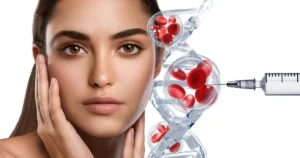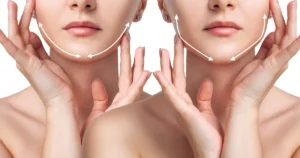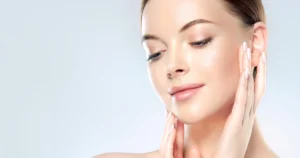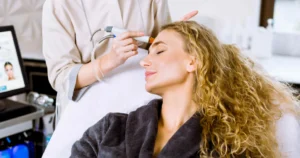Table of Contents
You’ve likely heard of chemical peels as a popular skincare treatment—but if you’re like many people, you might be wondering how often you should actually get one. Maybe you’re preparing for a special event or seeking a long-term solution to common skin concerns like dullness, fine lines, or uneven skin tone. With so many peel options available, understanding how frequently you should schedule treatments is essential to achieving and maintaining healthy, radiant skin.
At Ella Medical Aesthetics, clients looking for chemical peels in Austin, Texas receive individualized care designed to match their skin type, condition, and goals. Whether you’re aiming for a single session or a full series, this guide will walk you through how chemical peel frequency impacts results—and why consistency matters.
What Are Chemical Peels?
These exfoliation procedures utilize acidic solutions like alpha hydroxy acids (AHAs) or beta hydroxy acids (BHAs) to strip away dead skin cells and expose the renewed, more uniformly-toned skin underneath. The intensity of these treatments varies from mild to intensive, based on your individual skin care requirements.
At Ella Medical Aesthetics, a personalized evaluation helps determine which type of peel is best for your goals. Options vary from gentle formulations for sensitive skin to deeper peels aimed at addressing signs of aging or hyperpigmentation. These skin rejuvenation treatments go beyond what at-home exfoliants can do, offering professional-grade results for long-term improvements.
Chemical Peel Benefits
The true power of chemical peels stems from their adaptability to address multiple skin concerns. Whether dealing with rough texture or uneven pigmentation, these treatments offer comprehensive enhancements that improve progressively through regular sessions.
Common chemical peel benefits include:
- Smoothing fine lines and wrinkles
- Enhancing overall skin tone and brightness
- Correcting uneven pigmentation
- Reducing acne and associated scarring
- Refining pores for a more polished texture
- Promoting collagen production for firmer, youthful-looking skin
- Improving skin hydration and radiance
- Increasing absorption of skincare products
Whether you’re scheduling a chemical peel for glowing skin ahead of a special occasion or committing to a long-term routine for chemical peel for anti-aging, these treatments deliver both immediate and cumulative improvements.
Who Should Get Chemical Peels?
One of the best things about chemical peels is that they’re suitable for nearly every skin type and concern. With customization, they can be made gentle enough for sensitive skin or targeted enough to treat persistent concerns.
Chemical peels are ideal for:
- Adults looking for smoother, clearer skin
- People dealing with acne, breakouts, or clogged pores
- Anyone noticing early signs of aging such as fine lines or skin laxity
- Individuals seeking to address chemical peel for uneven skin tone or sunspots
- Clients who want to boost their current skincare regimen
You don’t need to wait until problems arise—chemical peels can also serve as preventive maintenance for healthy skin. If you’re unsure whether a peel is right for you, contact us at Ella Medical Aesthetics for a personalized consultation to help determine the best treatment for your skin.
What to Expect: Treatment, Timeline, and Results
Before Your Appointment
To prepare for a chemical peel, it’s best to:
- Avoid exfoliants, retinoids, and tanning for a few days
- Share your current skincare routine with your provider
- Plan for mild downtime depending on the depth of the peel
During the Treatment
Most chemical peel sessions last between 30–45 minutes. The skin is first cleansed and prepped before the solution is applied. A mild tingling or warming sensation is normal as the acid works to exfoliate and renew the skin. Some peels are neutralized after a few minutes; others are left on to continue working post-treatment.
Aftercare and Recovery
Downtime varies by peel strength. Light peels may result in mild dryness or redness for 1–2 days. Medium-depth peels can involve visible peeling for several days, while deeper peels may require a week or more of recovery.
During recovery:
- Avoid sun exposure and wear SPF
- Keep skin hydrated and skip strong active ingredients
- Don’t pick at peeling skin—let it slough off naturally
When Will You See Results?
- Initial glow often appears within 3–7 days
- Full effects—including tone and texture improvements—are typically seen within 2 weeks
- Repeated treatments enhance collagen production and long-term skin health
Chemical Peel Frequency: How Often Is Best?
The ideal interval for chemical peels depends on several factors—your skin’s current condition, the depth of the peel, and your long-term goals.
General recommendations for chemical peel frequency:
- Light Peels (e.g., glycolic acid, lactic acid): Every 2–4 weeks
- Medium Peels (e.g., TCA or salicylic acid): Every 4–6 weeks
- Deep Peels (e.g., phenol): 1–2 times per year, with more intensive downtime
Most clients benefit from a series of 3–6 peels, spaced appropriately over several months. After initial treatments, maintenance peels every 6–8 weeks can help you preserve and build on your results.
Keep in mind that chemical peel frequency should always be guided by your provider. Overdoing it can lead to irritation or compromise your skin barrier, while spacing treatments correctly ensures optimal healing and long-term improvements.
FAQs & Common Concerns
How do I know which peel is right for me?
At Ella Medical Aesthetics, we conduct a thorough evaluation of your skin and goals to match you with the most effective type and strength of peel.
Will I peel after every session?
Not necessarily. Some lighter peels don’t produce visible shedding but still exfoliate beneath the surface. Medium and deep peels may result in peeling over several days.
Are chemical peels painful?
Most peels produce a mild tingling or warming sensation. Discomfort is usually minimal and short-lived.
Can peels be combined with other treatments?
Yes, chemical peels can be paired with facials, microneedling, or LED light therapy depending on your skin’s needs. These combinations can enhance results when timed properly.
What should I avoid after a peel?
Avoid sun exposure, heat, exfoliants, and harsh skincare ingredients until your provider gives you the go-ahead.
Radiance Starts with Routine: Find Your Perfect Peel Schedule
You don’t need a dramatic procedure to see dramatic results. With the right chemical peel frequency, your skin can become brighter, smoother, and visibly healthier—without downtime or stress. Whether you’re treating sun damage, acne scars, or want that fresh glow, chemical peels in Austin, Texas offer a proven path to revitalized skin.
At Ella Medical Aesthetics, we believe in customized care. Our expert team tailors each treatment plan to match your unique skin, schedule, and goals—so you always feel informed, comfortable, and confident in your skincare journey.
Achieve beautiful, smooth skin – get started with a chemical peel!







